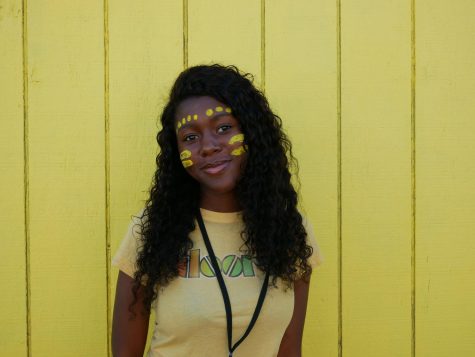Students Say they Question Fairness of the Dress Code
December 14, 2018
Students and teachers of Eleanor Roosevelt High School said that they question the fairness of the ERHS dress code.
Most students argued that young women have received the brunt of this sexism, and tend to be criticized more on the subject than men.
Senior Maurice Ratiff III said that “staff members mainly express discontent with what specifically girls wear.” He added that “Yes, they are more strict on girls than they are boys.”
Courtney Jeffrey, a junior, said she agrees. “I see boys wearing muscle shirts in the summer and no one says anything at all. But as soon as a girl wears a tank top, she’s jumped on.”
Recently, news sources have reported that women dressed professionally for work-related circumstances are ridiculed for their clothing. Congresswoman Alexandria Ocasio-Cortez shared her experience on her Twitter account, where she exposed a journalist for being “misogynist” due to their harsh criticism of her clothing. The reason for such judgement, she claimed, was that she was a woman.
Many of the students claimed to have never been directly reprimanded by their choice of clothing, yet they remained aware of the issue through experiences from friends and teachers.
Freshman Julia Knisley commented, “I’ve never really looked at it, but I’ve heard that’s it’s really one-sided. There isn’t a guys’ dress code but there’s a lot on the girls…. I’ve seen my friends come in wearing a complete button up shirt, but the top button is undone and they were told to change. And there was a guy who literally didn’t have a shirt on in the hallway, but nobody said anything to him.”
Students said they found it somewhat difficult to properly comment on the dress code. “I think the no durags is kinda weird,” Knisley said. “It’s not hurting anybody. But I don’t think there’s anything that really targets them.”
Some students said that the code is not as unfair to male students. “I’m sure they feel some type of way about it, but I don’t know,” Jeffrey says. “I don’t think it’s as much as the girls.”
Freedom within the dress code seems to be held dearly by students.“We’re teenagers,” Ratiff declared passionately. “We’re coming into the age where we’re trying to find our identity and we’re trying to express ourselves freely, and that would be through clothing.”
In light of potential consequences of the issue, students offered many solutions to help reduce backlash on the subject. “I think honestly they could chill out a little bit,” Knisley offered. “As students we could email our administrators and ask them why the code is so one-sided.”
Ratiff provided a different solution, specifically pertaining to administrators. “If you see something that is inappropriate, say something about that. If it’s a crop-top or a little bit of midriff, it’s not that big of a deal,” he concluded.



